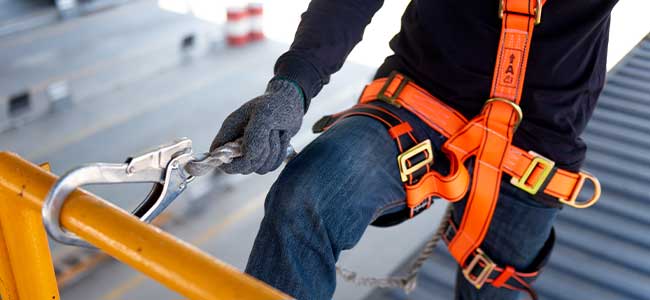
Evaluating and Upgrading Fall Protection Systems: A Guide for Safety Managers
Staying ahead of the curve requires proactive assessments and enhancements in fall protection.
When it comes to keeping workers safe, making sure they’re protected from falls is a top priority, especially in workplaces where they have to work from heights. A worker’s risk of falling is very real, which means it’s not only important to meet the tough safety requirements, but also to truly care about keeping your people safe.
With safety managers in mind — since they have the responsibility of making sure everyone is safe — here are some step-by-step procedures on how to regularly check and improve your fall protection initiatives.
The Imperative for Regular Evaluations
Regular evaluations of fall protection measures are essential in industrial work environments. As operational practices evolve and site conditions change, safety systems must not only meet the baseline compliance with OSHA regulations and pertinent industry standards but also offer robust defense against identified workplace hazards.
These critical evaluations serve to examine the suitability of fall protection measures, ensuring their ongoing relevance and effectiveness in safeguarding workers from the inherent dangers of heights. By consistently aligning safety measures with the latest best practices and technological innovations, organizations can reinforce a culture of safety that proactively evolves to meet the complex challenges of modern industrial activities.
Comprehensive Evaluation Criteria
1. Hazard identification. A proactive approach involves conducting regular walkthroughs and engaging with employees to identify potential fall hazards, ensuring no risk is overlooked.
2. Control selection. Determining the most suitable fall protection methods requires a balance between compliance, feasibility and worker comfort, aiming for solutions that minimize risk while supporting operational efficiency.
3. Equipment inspection. Ensuring the integrity of fall protection gear through meticulous inspections can prevent equipment failure, a common cause of fall-related incidents.
4. Work area inspection. Changes in work processes or environment may introduce new hazards, highlighting the need for adaptive fall protection strategies that accommodate these changes.
5. Compliance and standards. Keeping abreast of regulatory updates and industry best practices is essential for maintaining an effective and legally compliant fall protection program.
This article originally appeared in the June 2024 issue of Occupational Health & Safety.